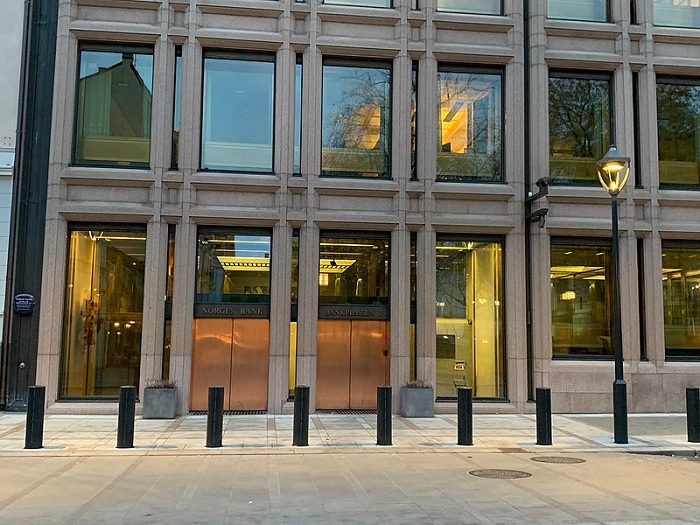Headline News Online News
Norway’s central bank announced Thursday a sharper-than-expected interest rate hike and warned of more to come, as policymakers tighten monetary policies worldwide to fight surging inflation. Online News
Central bank banks across the world have launched a series of rate increases in efforts to tame soaring consumer prices, but the curbing of easy money policies has raised fears that the policies could spark recessions.
Norway’s central bank raised its main rate by half a percentage point to 1.25 percent, its fourth hike since September, when it stood at zero.
The previous increases had been of 0.25 percentage points each and few analysts had predicted Thursday’s sharper hike.
“Prospects for a more prolonged period of high inflation suggest a faster rise in the policy rate than projected earlier,” Norges Bank governor Ida Wolden Bache said in a statement.
“A faster rate rise now will reduce the risk of inflation remaining high and the need for a sharper tightening of monetary policy further out,” she continued.
To curb inflation, the bank will now accelerate its tightening of its monetary policy and it now expects its rate to reach “three percent in the period to summer 2023,” while it previously expected it to reach 2.5 percent by the end of 2023.
The rate will “most likely” rise to 1.5 percent in August, based on the bank’s “current assessment of the outlook and balance of risks”, Wolden Bache said.
Consumer prices in Norway reached 5.7 percent year-on-year in May and core inflation excluding energy prices, the indicator used by Norges Bank, was 3.4 percent — well above the official monetary policy target of around two percent.

The US Federal Reserve unleashed its biggest rate hike since 1994 last week while the European Central Bank is expected to act in July with its first rate hike in more than a decade.
phy/jll/lth
© Agence France-Presse. All rights are reserved.
Online News Headline News
Notes from APS Radio News
During the past few years, a number of the world’s central banks have engaged in massive programs of monetary expansion, even as jobs and businesses were lost by way of virus-related restrictions and quarantines.
For example, beginning in March of 2020, the US Federal Reserve engaged in a substantially greater program of monetary expansion by purchasing hundreds of billions of dollars of Treasury and corporate bonds.
Since the early part of March 2020 to date, the Federal Reserve has added over $4 trillion to its holdings.
In particular, whereas on or about February 24, 2020, the holdings of the Federal Reserve stood at $4.2 trillion, on or about January 17, 2022, the holdings of the Federal Reserve stood at about $8.9 trillion.
As well, the Federal Reserve has kept interest rates low.
Recently, Jerome Powell, the head of the Federal Reserve, said that he wasn’t concerned about inflation and that, for the none, the Federal Reserve would keep interest rates at low levels.
Another examples is that of the Bank of Japan.
According to Fred Economic Data, as of October 2021, the Bank of Japan’s holdings were about $6.4 trillion or about 725 trillion Yen.
In the early part of March 2020, the Bank of Japan’s holdings were $5.3 holdings. During the period mentioned, the Bank of Japan added over one trillion dollars to its holdings.
A number of corporations have been borrowing money inexpensively and have been purchasing their own shares of stocks, increasing share prices of stocks.
Headline News Online News
Still, there are concerns among investors.
A number of them have expressed concerns about central banks’ eventually increasing interest rates, as, during the past year, inflation levels have been increasing.
The combination of low interest rates, expansive monetary policies, fiscal stimulus programs, which themselves have infused trillions into the US economy, and shortages of goods and services caused by virus-related restrictions and lockdowns has increased levels of inflation.
Investors also have worried, for example, about announcements that were made by companies like Toyota and VW; months ago, those companies announced that because of shortages of particular types of material, they would be reducing levels of production.
Months ago, the results of a survey of UK manufacturers were released.
That survey indicated that many businesses in the UK were concerned about shortages of supplies.
In general, jobs and businesses have been lost by way of mandates, restrictions and quarantines, which, in their turn, were imposed by way of the virus narrative.
In the US, overall, the mortality rate of the virus is about .069%, according to Statista, an award-winning service.
The recovery rate is over 99% for most age groups.
What has followed in the wake of lockdowns and mandates has been the infusion of trillions of dollars into the US economy, the increasing succeess of online businesses like Amazon and other large online retailers, various bank and tech-related stocks, the shuttering of small to medium-sized businesses and the loss of millions of jobs.
Another result has been the increasing levels of inflation, especially those of food and fuel.
In official terms, for purposes of reporting, the US Labor Department uses what is called “core inflation”.
Core inflation excludes items like food and fuel, as those are deemed too volatile.
Online News Headline News

